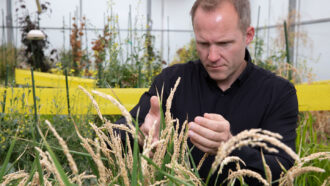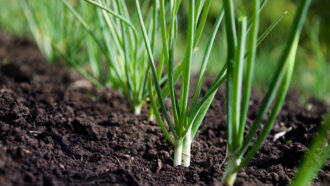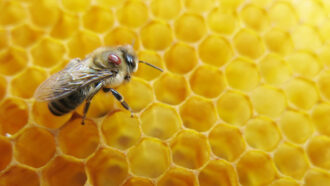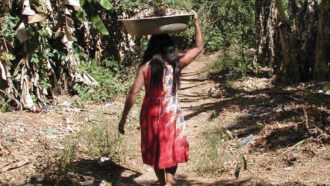How to limit the need for pesticides
Integrated pest management can boost human health
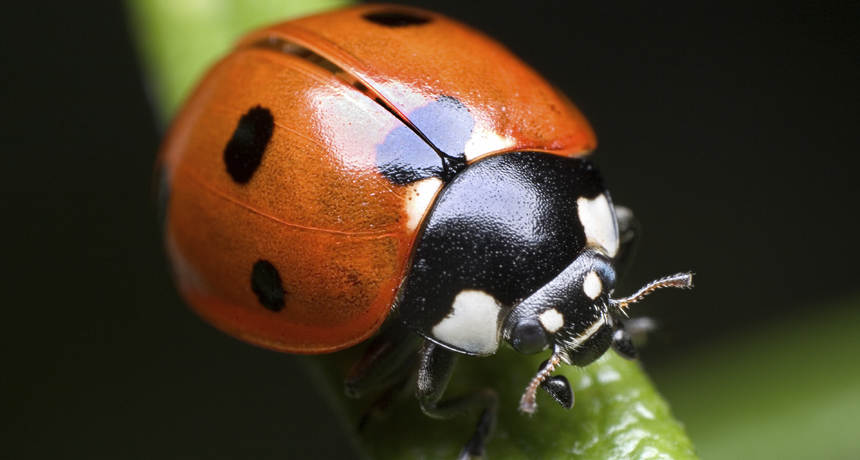
One way to limit the need for toxic pest-killing chemicals is to encourage nature’s pest killers, like ladybugs, to inhabit your yard or garden. You can buy these beneficial insects to release in your yard.
et_engineer/iStockphoto
Pesticides are designed to kill particular classes of organisms. Most target a narrow range of species of insects, mites or nematodes. That doesn’t mean they can’t, however, also poison other critters, including bees or even people.
Pesticides sold for use around the home tend to be relatively nontoxic or are mixed in concentrations that are not overly strong. They should be relatively safe around people, at least when used as directed. But kids are smaller than adults. That means it takes a smaller dose of pesticide to have an effect inside a child’s body. And even low levels of pesticides can cause behavioral problems, trouble concentrating or even cancer, notes the American Academy of Pediatrics (AAP).
That presents a concern, because kids are exposed to a wide variety of pesticides every day, the AAP finds. Shoes track these chemicals into our homes. The wind spreads them beyond the field or garden. Some bug or rodent killers are even designed for use in homes. And traces of pesticides may even taint foods.
That’s why the AAP recommends taking steps to reduce pesticide exposure. One way is to eat organic foods. Another is to switch to integrated pest management, or IPM. This takes a natural approach to pest control.
For instance, gardeners or farmers may release ladybugs or other natural predators onto their plants. There, the good bugs munch on the pests. Or growers can plant things that attract birds and other predatory species. Examples include plants that produce yummy berries and seeds, or that provide protective cover for the natural predators. Those species can control pests naturally. They patrol a yard or field snacking on caterpillars, grasshoppers and other animals that may pose a threat to plants.
Recently, some crop scientists have found that certain species of plants naturally produce vapors that act as chemical distress calls. Various insects and other predatory animals have evolved to learn that these scents signal a plant is under attack by a pest. Often a predator will find those pests yummy. Plants that make these distress scents basically recruit their own saviors.
People also can choose certain species of crops or garden plants whose roots exude their own weed killers. These plants include some lawn grasses and garden shrubs. Botanists refer to this type of chemical defense as allelopathy (Ah LEE lo path ee).
IPM practices allow the use of chemical pesticides, but only as a last resort. So consider
allowing a few weeds in the lawn (or hand-pulling them) to avoid the need for poisonous weed killers. Seal cracks around the house to keep spiders, crickets, mice and other pests outside, where they belong. And fix leaky pipes to dry up the water that lures many pests into a building.
Taking such IPM steps can minimize any need for pesticides. That leads to a safer environment for people, pets and welcomed wildlife — including bees.
Power Words
allelopathy A plant’s production of chemicals that impair the growth and survival of other plant species.
botany The field of biology that focuses on plants. A scientist in this field is known as a botanist.
evolve To change gradually over generations, or a long period of time.
integrated pest management (abbreviated IPM) The process of using primarily non-chemical steps to reduce pest problems. IPM practices allow the use of chemical pesticides, but only as a last resort.
mite Tiny eight-legged creature related to spiders and ticks. It is not an insect.
organic (in agriculture) Farm products grown without the use of non-natural and potentially toxic chemicals, especially pesticides.
pediatrics Relating to children and especially child health.
pesticide A chemical or mix of compounds used to kill insects, rodents or other organisms harmful to cultivated plants, pet or livestock, or that infest homes, offices, farm buildings and other protected structures.
predator (adjective: predatory) A creature that preys on other animals for most or all of its food.

